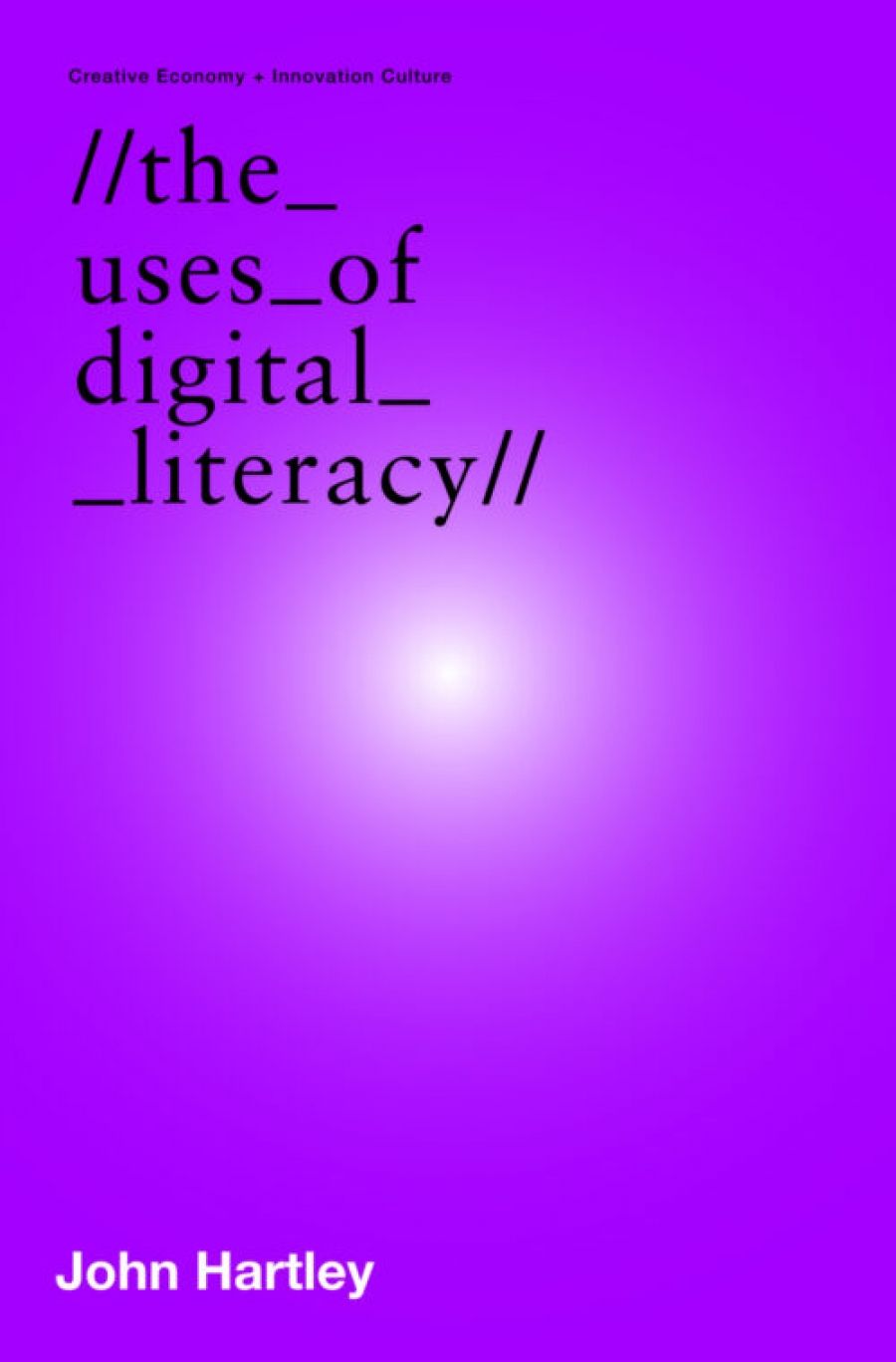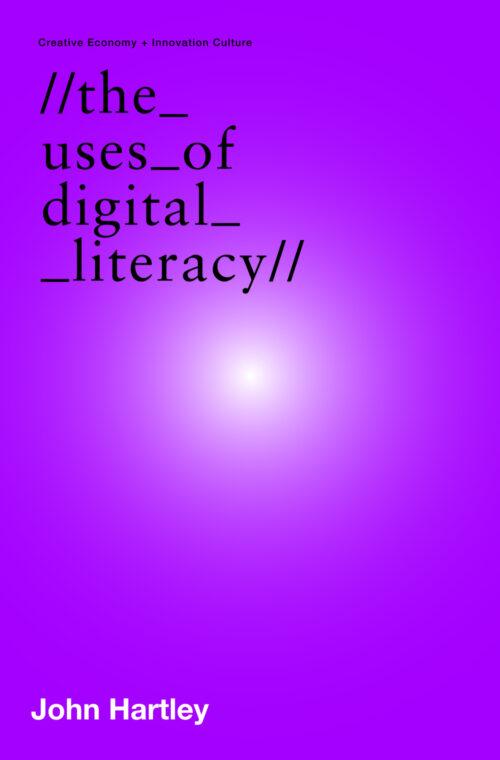
- Free Article: No
- Contents Category: Cultural Studies
- Review Article: Yes
- Article Title: Being in the truth
- Online Only: No
- Custom Highlight Text:
It doesn’t take much to realise that John Hartley admires the work of Richard Hoggart, the famous English literary critic and founder of the field of Cultural Studies. The titles of several of his books are tributes to Hoggart, including this one. As Hartley explains on the first page, The Uses of Literacy (1957) set the agenda for educational and disciplinary reform in schools and universities. Hoggart’s strong views on the abuse of literacy, especially in the entertainment media, found much public support. This interest in literacy lay in what ordinary people did with it as part of everyday culture rather than as an instrumental skill for business, civic or religious purposes.
- Book 1 Title: The Uses of Digital Literacy
- Book 1 Biblio: UQP, $35 pb, 253 pp
- Book 1 Cover Small (400 x 600):

Hoggart argued strongly for ‘critical’ literacy as a form of popular engagement with popular media. Importantly, he did not presume that the tastes of intellectuals are best for everyone. As Hoggart put it, ‘there are other ways of being in the truth’. This remarkable turn of phrase provides a motif for Hartley’s examination of contemporary literacy in the context of online and mobile media. Whereas Hoggart’s focus was on the print media, Hartley argues that it is time for a reappraisal of the uses of literacy in the era of multimedia.
A Federation Fellow, Professor John Hartley is the Research Director of the Australian Research Council Centre of Excellence for Creative Industries and Innovation at Queensland University of Technology. In The Uses of Digital Literacy, he argues that, as popular culture moves from passive consumption towards active production, it becomes an engine for the growth of knowledge. Now that every user of digital media can be a publisher, consumption needs to be rethought as action, not behaviour. Hartley also argues that media consumption needs to be rethought as a mode of literacy – a means of communication in which writing is as widespread as reading. In an age when new media make possible what was impossible during the era of broadcast mass communication, Hartley believes that the implications are far-reaching for debates about the new technologies, innovation and the knowledge economy.
Hartley develops his arguments about the possibilities for the growth of knowledge with digital literacy in the context of the creative industries, television, YouTube, digital storytelling, journalism, fashion and ‘cultural science’. Each domain gets a chapter’s attention. He regards social-network enterprises such as MySpace, Facebook and Twitter, and user-created content such as blogs, YouTube and Wikipedia, as examples of self-expression which are individual, interactive and international. YouTube, for example, has significantly increased the number of people publishing videos, which indicates the possibilities that Internet-based social networks may offer as they become cheaper and more widespread.
The book is provocative, intelligent and entertaining. I have only one quibble: Hartley believes that critical digital literacy should be included in school curricula, but seems unaware that it is already being debated, researched and taught in schools around the world. He is too quick to blame teachers for failing to ensure that students attain a level of critical digital literacy appropriate for producing, as well as consuming, digital content. If education systems don’t seem to be doing their job, the explanation is usually more complex than simply the inadequacy of teachers. Take, for starters, the politics of including popular culture in the curriculum.
Scattered though the book are some delightful asides. At the beginning, Hartley tells a story about the BBC film The Chatterley Affair (2006). As a literary critic, Hoggart was called as an expert witness to defend Penguin Books from charges of obscenity. He argued that D.H. Lawrence’s novel wasn’t obscene but was in fact ‘puritanical’, and the case was won. The trial led to increased sales of both Lady Chatterley’s Lover and The Uses of Literacy. It also led, indirectly, to the foundation of the famous Birmingham Centre for Contemporary Cultural Studies, Allen Lane, owner of Penguin Books, having sent Hoggart a cheque which enabled him to establish it.
Hoggart’s elder son, Simon, political columnist for the Guardian, wrote that the actor David Tennant, of Blackpool and Casanova fame, was perfect for the part of his father. Tennant had carefully prepared for the role by watching old interviews of Hoggart, and was extremely convincing with the clothes, the hair, the accent, the speech rhythms. Only one thing was wrong – the sideburns. To do the television film, Tennant had to take off twenty-four hours from making Doctor Who in Cardiff, and the sideburns wouldn’t grow back in a day.
I was also amused by the droll way Hartley opened Chapter 4, titled ‘Uses of YouTube’. It begins with the question: ‘Did you know that John Hartley invented You-Tube?’ Well, as he explains, not YouTube exactly, but something close called YIRN, and not by himself exactly, but with a team.
The final chapter is a call to arms. As Hartley explains, Cultural Studies was born out of an attempt to understand social change, but soon became an intellectual attempt to provoke social change in certain areas while resisting it in others. He urges his fellow travellers in Cultural Studies to seek out conceptual frameworks to replace the abandoned Marxist approach. Only then will it be possible, says Hartley, to understand how new media, popular sense-making and global commercial enterprise are affecting the growth of knowledge. That, he says, is the challenge at a time when the field will have to shift its centre of gravity from West/North to East/South, as the rise of the creative industries in China can no longer be ignored.


Comments powered by CComment